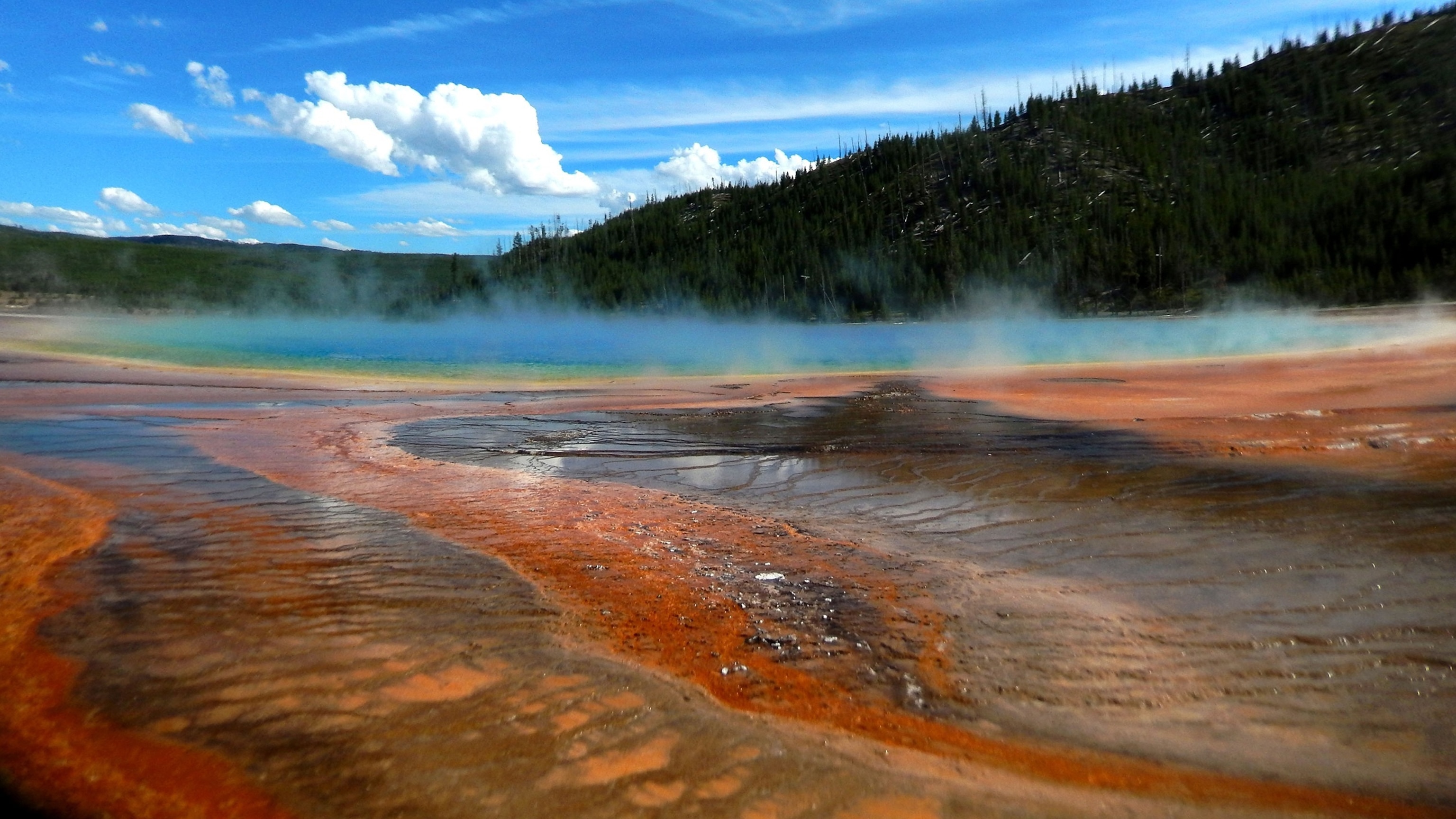Hidden magma cap discovered at Yellowstone National Park
The magma cap is critical for preventing eruptions at Yellowstone.
Geoscientists have discovered a magma cap at Yellowstone National Park that is likely playing a critical role in preventing a massive eruption in one of the largest active volcanic systems in the world.
The cap is made of molten silicate materials and supercritical water -- a liquid-like gas that forms after water exceeds its critical point of 374 degrees Celsius -- and porous rock. It is located about 2.4 miles below the Earth's surface and essentially acts as a lid, trapping pressure and heat below it, according to the team of researchers who uncovered it.
The scientists found the cap by using a 53,000-pound vibroseis truck, a device capable of injecting low-frequency vibrations into the Earth to study the geology of the volcanic system. By generating tiny earthquakes that send seismic waves into the ground, the researchers were able to measure how the waves reflected off subsurface layers.
The scientists were surprised to see "something physically happening" at that depth, said Brandon Schmandt, professor of earth, environmental and planetary sciences at Rice University and co-author of the study, in a statement.

The stability of hazardous volcanic systems is "strongly influenced" by the uppermost magma storage depth, according to researchers.
"For decades, we’ve known there’s magma beneath Yellowstone, but the exact depth and structure of its upper boundary has been a big question," Schmandt said.
In 2022, researchers discovered that Yellowstone's supervolcano has substantially more magma reservoir under the caldera than previously thought. The lava is also flowing at shallow depths that fueled prior eruption.
Through modeling, the researchers determined the magma cap consists of molten silicate materials and supercritical water bubbles within porous rock. The bubbles are formed as the magma rises and decompresses, causing gases like water and carbon dioxide to separate from the melt.

Volcanic eruptions can then occur as the bubbles accumulate and increase in buoyancy, driving an explosion.
An eruption at Yellowstone, however, is likely not imminent, the researchers said.
Data from seismic imaging and advanced computer modeling indicates that the magma reservoir is actively releasing gas and remains in a stable state. The system was described by Schmandt as "steady breathing," with the bubbles rising and releasing through the porous rock of the magma cap.
"Although we detected a volatile-rich layer, its bubble and melt contents are below the levels typically associated with imminent eruption," Schmandt said. "Instead, it looks like the system is efficiently venting gas through cracks and channels between mineral crystals."
Yellowstone's complex geology proved to be a challenging environment to obtain the data, the researchers said. The scattering seismic waves produced noisy data that was hard to interpret.
"When you see noisy, challenging data, don’t give up," Chenlong Duan, a co-author on the study, said.
The geoscientists were able to capture one of the first "super clear" images of the top of the magma reservoir beneath the Yellowstone caldera using the structural seismic imaging technique, said Duan, who developed the technique.
The discovery could offer clues to future activity amid Yellowstone's extensive volcanic system, the researchers said.



